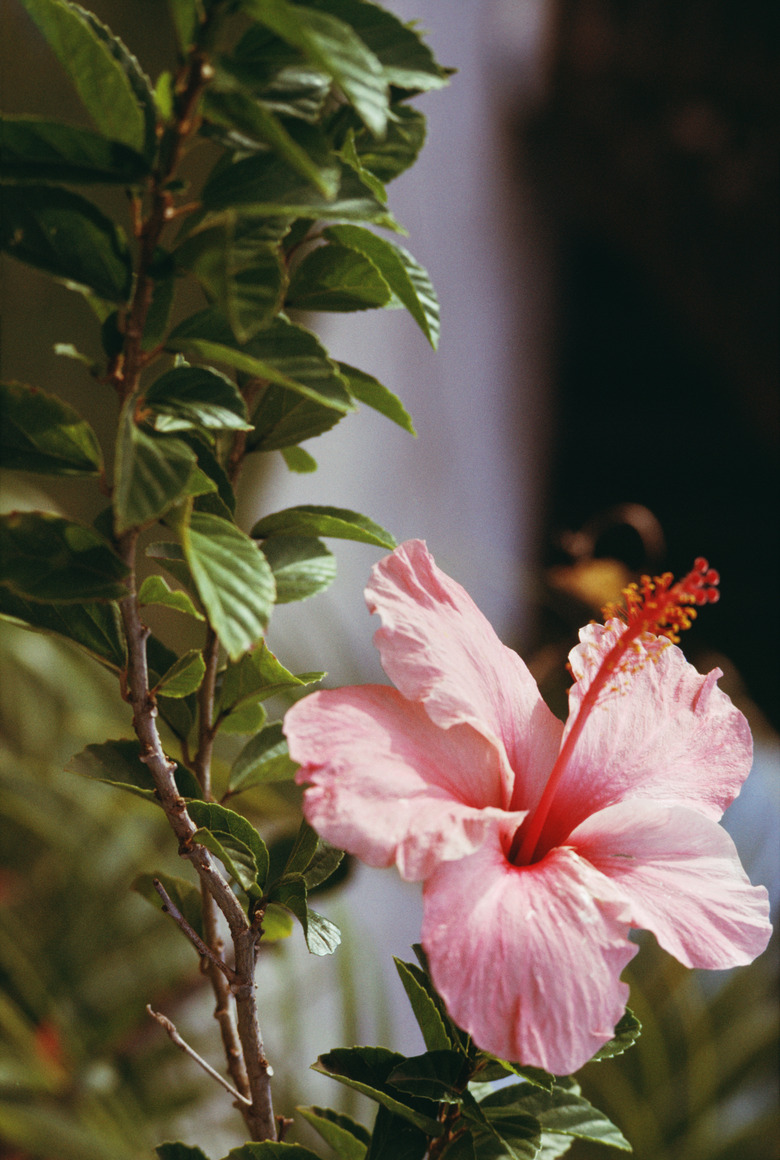Description Of The Hibiscus Leaf
Even experts don't agree where the hibiscus originated, but there's no disagreement about the plant's beauty. Cross-hybridization produced hibiscus in a variety of colors and shapes and there's no shortage of societies dedicated to breeding new cultivars. No matter how many new hibiscus colors are developed, leaf production remains constant. Every hibiscus leaf is so nutrient rich, it's used to make shampoo, tea and medications. Identify the leaves of the next hibiscus you spot using the following description.
General Description
Hibiscus leaves are bright green and flat. Each connects to the plant stem via a petiole. The hibiscus leaf is delivery system, manufacturing plant food via the process of photosynthesis and then pushing nutrients throughout the stem, flower and root system. A signature rib or vein runs throughout each leaf and there are also minute openings, called stoma, on leaves for transpiration.
Leaf Arrangement
Hibiscus leaves sprout from stems at different intervals. If observing a cutting, notice that every leaf is growing at a slightly different height on the stem from the others. As a rule, a healthy hibiscus plant produces three leafs at each growth site on a stem. The plant produces downward-bending leaves while growing, regardless of the amount of water it receives. Juvenile and mature hibiscus leaves look different because they change shape as they mature. This is dimorphic growth.
Leaf Shape
Every hibiscus leaf's shape is predetermined and established in the seed embryo. Once emerging from the stem, hibiscus leaf buds take the form of two, round lobes. The lobes merge as the leaf matures. When fully formed, it resembles a heart, which is why horticulturists refer to the hibiscus leaf as cordate shaped. Even as a bud, a hibiscus leaf is identified by its crenate, a leaf margin that produces an edge that's etched like teeth. This is called a notch.
Leaf Unfolding Rate
It takes about seven weeks for a hibiscus leaf to mature on the stem. Although temperature may slightly alter the rate at which leaves unfold, all of the leaves on a plant unfold at the same predictable and uniform rate. For that reason, a plant or bush that appears to be a member of the hibiscus family but has leaves unfolding at different rates, is a different species of plant.
